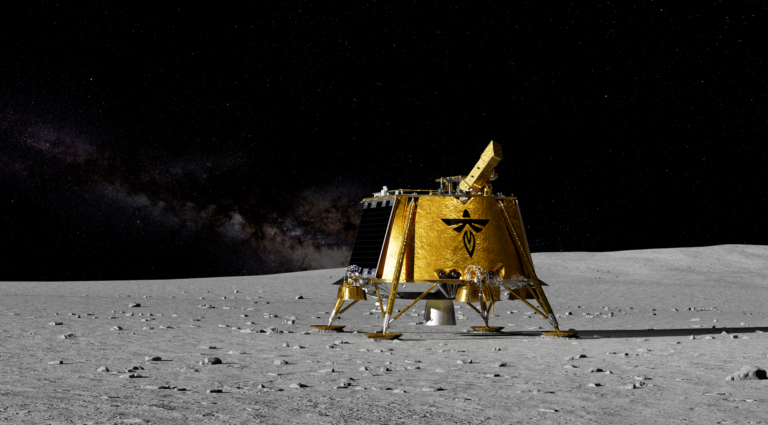NASA and contractors SpaceX and Firefly Aerospace, the manufacturer of the Blue Ghost lunar lander, are targeting Wednesday at 1:11 a.m. EST for Blue Ghost Mission 1, also known as “Ghost Riders in the Sky.” The mission marks Blue Ghost’s debut flight to the moon, where the space agency’s scientific equipment will spend about two weeks studying the lunar soil, weather, and geography.
NASA is providing live coverage of Blue Ghost’s launch atop a SpaceX Falcon 9 rocket from Launch Complex 39A at Kennedy Space Center in Florida, available on the space agency’s website, NASA+ streaming service, and social media accounts. Firefly will also provide mission updates during the lander’s 45-day trip to the moon.
Here’s what to watch for as Blue Ghost makes its debut:
The Lander
Blue Ghost is named after the Phausis reticulata firefly—a rare variety that glows bluish-white.
About the size of a pickup truck, the lander has 20 thrusters and can hold more than 2,200 pounds of propellant. Its legs are shock absorbing, allowing it to withstand the impact on the lunar surface. Its solar panels will generate energy used to provide power and thermal systems during the mission, as well as beam communications—including high-definition video—back to Earth.
After launching on Falcon 9, Blue Ghost will separate and orbit the Earth for just under one month to gather momentum. It’ll take four more days to reach lunar orbit, where the lander will circle for two weeks as it prepares for landing.
The Landing
Fittingly, Blue Ghost’s biggest test will be the landing itself.
The lander’s main engine—which produces more than 1,000 Newtons of thrust—will ignite about an hour before touchdown. Cameras will guide it around obstacles and toward a suitable landing spot as it coasts to the lunar surface.
It will then flip, fire all of its engines, and decelerate from about 3,800 mph to 90 mph. Sensors on the landing legs will trigger a main engine shutdown, while smaller thrusters pulse to cushion the landing.
The Destination
Blue Ghost is expected to land near Mons Latreille, a 4-mile wide mountain in the moon’s Mare Crisium basin. Scientists believe the mountain and basin were molded by volcanic activity billions of years ago.
There, the lander will spend one lunar day—or about two Earth weeks—studying the ancient landing site using an array of NASA instruments. Researchers will point lasers at a Next Generation Lunar Retroreflector (NGLR) to measure the moon’s distance from Earth. Other tools will collect dust samples, capture photos and video of Blue Ghost’s landing, and drill into the moon’s surface, among other demonstrations.
More to Come
Blue Ghost Mission 1 is part of NASA’s Commercial Lunar Payload Services (CLPS) program, which works with U.S. companies to land small landers and science payloads on the moon.
Blue Ghost Mission 2, scheduled for 2026, would fly to the far side of the moon, which, according to Firefly, would be the farthest lunar landing site ever achieved. A third mission scheduled for 2028 would send Blue Ghost to the moon’s Gruithuisen Domes: a “geologic enigma,” in NASA’s words.



